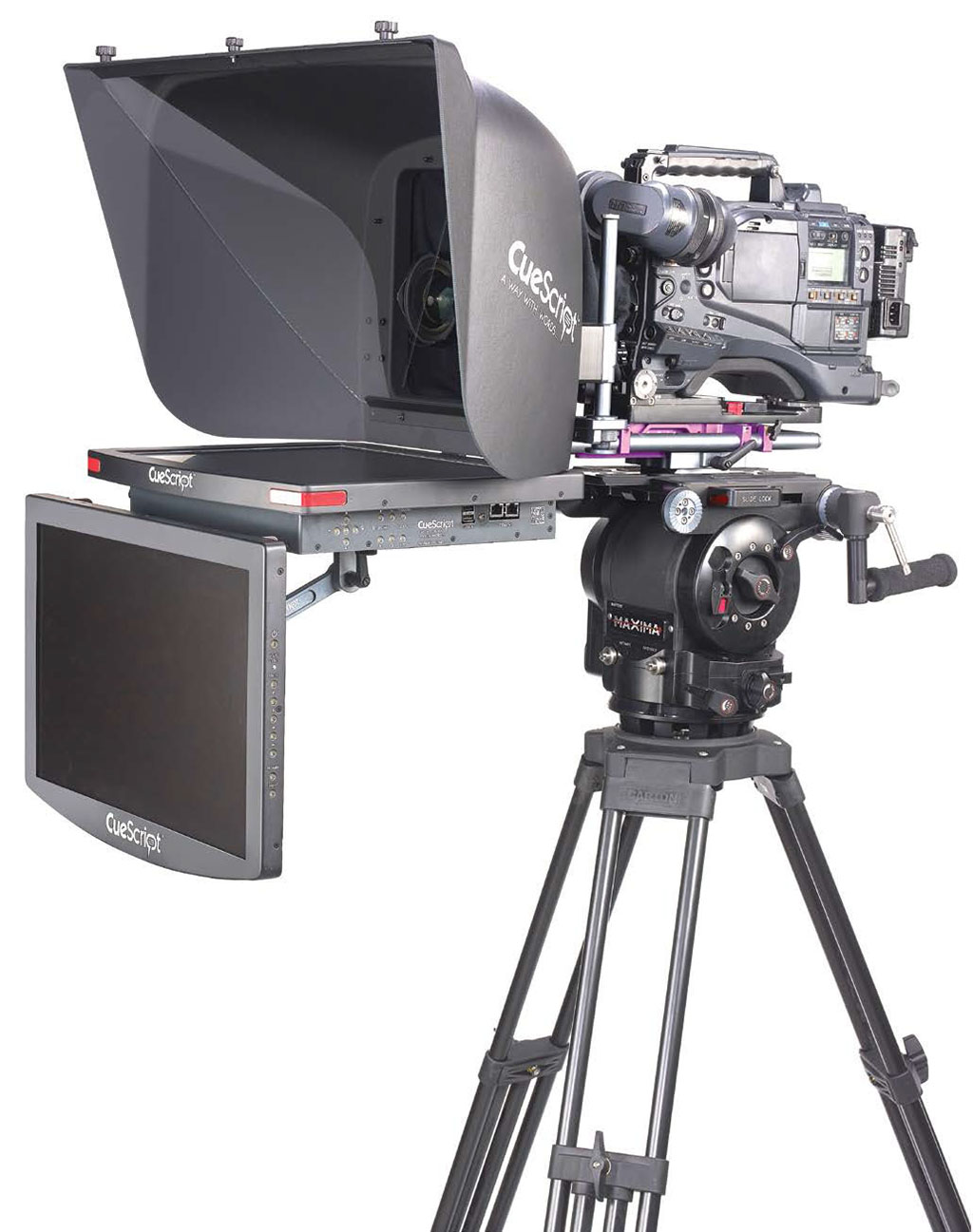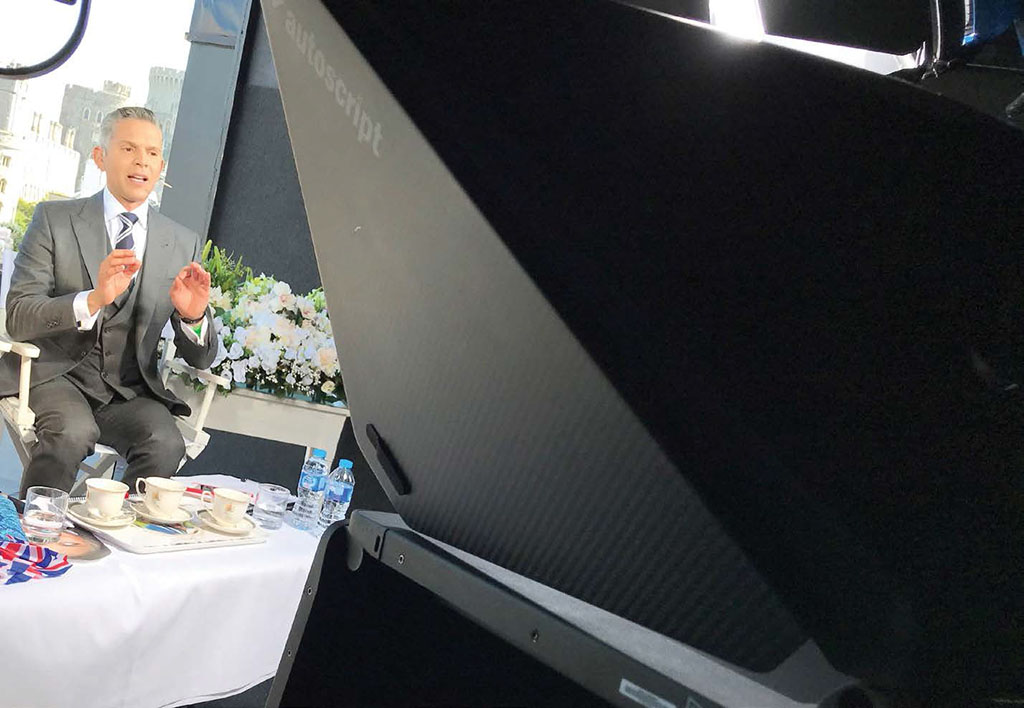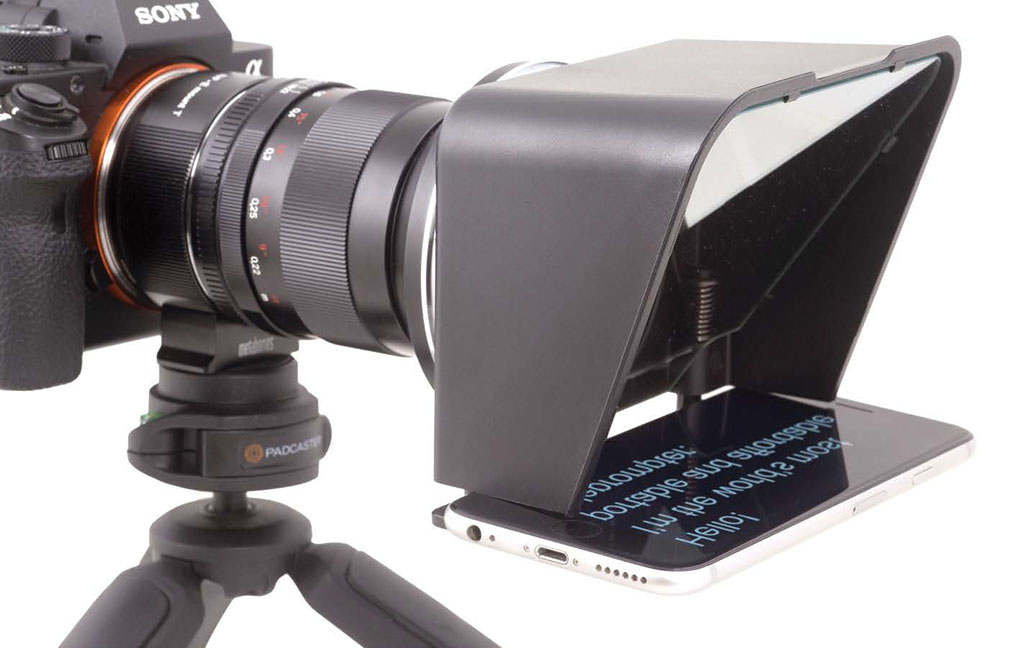Prompting Takes the Next Migration to IP
SEATTLE—Dating back to the 1960s, teleprompters have been must-have equipment for newscasts as well as politicians, even as the early models were Rube Goldberg-ish contraptions that scrolled typewritten scrolls just off the camera lens. Later, scripts rode a conveyor belt in front of chintzy black and white cameras, with the script displayed on CRT monitors that appeared in front of the camera lens through use of half-silvered mirrors. Computer-rendered text later replaced the scrolling paper scripts, and that’s where things have been for 40 or so years.
That’s not to say that nothing’s changed in prompting. There are a number of technology changes currently going on, with more just around the corner.
TIGHT SPACES
Michael Accardi, president of CueScript, said he’s seeing a number of news studios needing to work in tight spaces. That’s creating a lot of interest in his company’s PTZ prompter. “What we thought would be a small usage prompter has become outstanding for us.”

The trick to the PTZ prompter is getting the camera inside the hood, which allows proper positioning of the lens. “Being able to pan 90 degrees with a PTZ, being small enough to get it close to a wall in a newsroom, or for use in an office space; they get into places where people normally couldn’t get a prompter,” he said.
Accardi said studios are also considering IP-based prompters as part of an overall migration to an IP infrastructure. “We started doing IP from day-one, when we introduced our software in 2014,” he said. “Our approach has always been that you can go IP end to end, at all cost, if you so wish. But we don’t force it on you.”
CueScript’s prompter monitors, video boxes and controllers have IP network jacks on them, but the monitors and video boxes have SDI and composite inputs, and the controllers also provide USB and CAN bus (Controller Area Network) ports. “You get to pick and choose what you want,” Accardi said. “We don’t dictate to you.” But when the customer wants to go to IP, it’s there waiting to be implemented.
The professional video industry's #1 source for news, trends and product and tech information. Sign up below.
GETTING RID OF THE BOX

Robin Brown, prompting product manager for Autoscript and Autocue, said he’s also finding customer interest in IP prompting. In response the company launched their IP range in 2017, which gives customers the option to go between an IP and standard baseband video workflow.
“We understand that customers are still apprehensive or nervous about doing a complete switchover [to IP], so we provide a solution that has both different variances,” he said. “But the rate of uptake to an IP workflow does seem to be growing quite rapidly.”
Brown pointed to one of the big advantages to an IP prompting infrastructure: “The basic element is that it reduces the amount of hardware that you require,” he said. “Traditionally you would have a box that produces composite video or HDI video, which is connected to your PC via a USB cable or serial cable, or however it’s connected.”
IP can eliminate that box. “We’re not sending video over IP, decompressing video and then recompressing it,” Brown said. “We’re just sending data, and the rendering is done by the PC that is inside the monitor itself. It means that we’re sending tiny bits of data. Even if you have a relatively slow internet speed, you can send data. It also means that those on-camera prompter screens can be anywhere.”
BRIDGING STANDARDS
Mike Burdick, sales manager at Mirror Image in Oshkosh, Wis., said that as prompter users have been updating the PCs that drive their prompting systems, they’re finding those PCs don’t have analog VGA ports, but digital HDMI ports instead. It’s part of an overall studio infrastructure trend.
“As the majority of cameras and studios are being upgraded and updated, or built from scratch, they are going to more of the digital formats that are sweeping through the industry right now,” Burdick said. “At the larger studios, SDI is common with the cameras, so it’s easy to kind of loop everything together through camera and feed the teleprompter.”
As customers upgrade their prompting monitors, they aren’t always ready to move to digital, according to Burdick. “Everything from our lower entry-level equipment, up to the full-sized studio equipment that utilize a monitor from 12-inch to 19-inch size has both HDMI and SDI as well as the more traditional VGA and composite inputs,” he said. “We’ve just had a handful of our customers in the past month here that have upgraded just the monitor on their older teleprompters so they could retrofit into the new studio.” When they do upgrade their prompting PCs, it’s just a matter of changing out the cabling.
SMART[PHONE] PROMPTING
Josh Apter, founder and CEO of Padcaster in New York, said that while his company’s DSLR-compatible smartphone-based prompter is convenient for professional production use, his company originally discovered a large market for a sub-$100 Parrot Prompter in schools.
“There were so many schools doing student broadcasts, morning announcements and things, and they were using a piece of paper that had them looking off to the side, or looking down at something,” he said. “That obviously works, but when you give them something like our prompter that’s so easy to use, it changes the entire thing.”

Instead of something bulky and hard to configure, the Parrot Prompter is a bundled kit which easily screws onto the lens threading, allowing the user to attach a smartphone to the assembly.
The Parrot Teleprompter includes Bluetooth remote and comes with 12 different-sized mounting rings comprising the most common lens diameters, 37mm–82mm, as well as a cleaning kit.
In the works is a Parrot prompter that doesn’t require lens threads for mounting.
